The kingdom of Saudi Arabia in 2019 released the Saudi vision 2030 which included visa reforms. One of the visa reforms that has been implemented is the e visa program which is a strategy to help boost tourism in the country by welcoming tourists from across the world.
In this guide we will discuss the new Saudi Arabia e-visa and tell you how to apply for it and how much it will cost you.
WhatsApp Us Now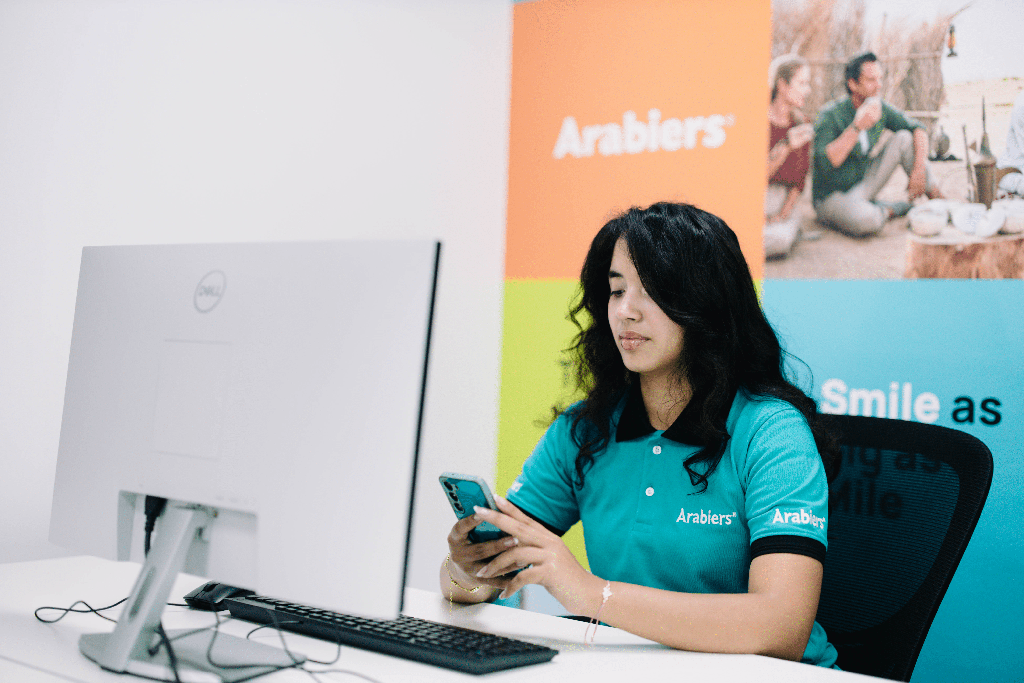
 We'll never share your info to anyone
We'll never share your info to anyone 100% safe and secure
100% safe and secure







Written By Arabiers Digital & Reviewed by Robeena Brown
September 20, 2024 | 15 min read
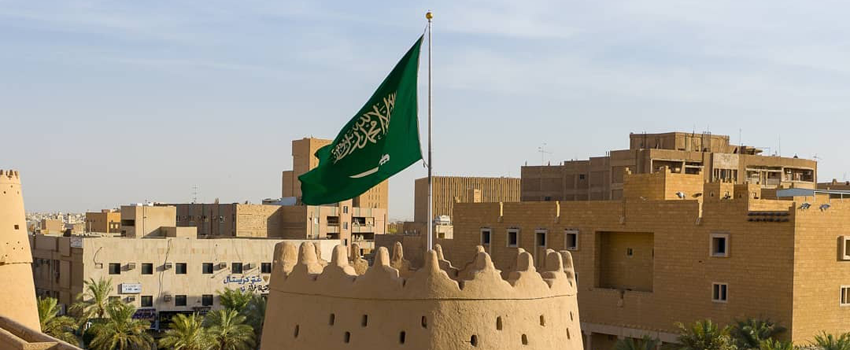
Since September 2019 after the new visa reforms, GCC residents and citizens of 63 countries can now easily apply for a Saudi e-visa. those who qualify for the e-visa no longer have to go through the tiring process of applying for the regular visas because applying for the e-visa is much easier.
| CANADA | PANAMA | SAINT KITTS AND NEVIS | UNITED STATES | |
| ALBANIA | ANDORRA | AUSTRIA | BELGIUM | BULGARIA |
| CROATIA | CYPRUS | CZECH REPUBLIC | DENMARK | ESTONIA |
| FINLAND | FRANCE | GEORGIA | GERMANY | GREECE |
| NETHERLANDS | HUNGARY | ICELAND | IRELAND | ITALY |
| LATVIA | LIECHTENSTEIN | LITHUANIA | LUXEMBOURG | MALTA |
| MONACO | MONTENEGRO | NORWAY | POLAND | PORTUGAL |
| ROMANIA | RUSSIA | SAN MARINO | SLOVAKIA | SLOVENIA |
| SPAIN | SWEDEN | SWITZERLAND | UKRAINE | UNITED KINGDOM |
| AZERBAIJAN | BRUNEI | CHINA (INCLUDING HONG KONG AND MACAU) | JAPAN | KAZAKHSTAN |
| KYRGYZSTAN | MALAYSIA | MALDIVES | SINGAPORE | SOUTH KOREA |
| TAJIKISTAN | THAILAND | TURKEY | UZBEKISTAN | |
| MAURITIUS | SEYCHELLES | SOUTH AFRICA | ||
| AUSTRALIA | NEW ZEALAND | |||
Citizens of the GCC countries and the residents with specific occupations can easily apply for a Saudi e-Visa from their resident country. Passport holders and those with a residence visa in Qatar, Bahrain, Kuwait, Oman and the UAE only need a few documents and their Saudi visa will be processed.
They only need to submit a copy of their GCC resident visa permit, a scanned copy of their passport and a recent photo that is taken against a white background.
If you are applying for the Saudi e-visa, because the process is online, you need to scan the documents that are required and send them to the Arabiers team in soft copy. Here are the documents you need to apply for a Saudi e-visa :
Ordinarily, the Saudi Arabia eVisas are non-extendable according to the Kingdom of Saudi Arabia ministry of foreign affairs. The validity of the Saudi eVisas is 1 year and allows multiple entries for a maximum of 90 days. You will have to apply for a new visa instead of renewing it in case your visa expires before use or if you exceed the allowed duration of stay.
Saudi Arabia offers four categories of evisa for UAE residents which include the 90 days’ multiple entry visa, Transit visa, Business visa and Umrah visa. In most cases the UAE residents prefers getting a 90 days’ multiple entry visa while others opt for the specific visas for the intended purpose of travel.
Business Visa – This is a visa that is applied by any person travelling to Saudi for business purposes. This visa allows one to enter the country for business meetings, conferences and to explore business opportunities. To qualify for this visa, you need to have an invite from a Saudi Company or a government entity.
Umrah Visa – This is the visa applied by pilgrims seeking to enter Saudi Arabia to perform Umrah during Pilgrimage. The Umrah visa cannot be used during the Hajj Season.
Transit Visa – This visa is applied by travelers passing through Saudi Arabia, and allows them to stay in the country for up to 96 hours. It is the ideal visa for people who wish to explore Saudi for a short period during a layover. You can apply for the visa when booking your flight ticket with airlines such as Saudi Air or Flynas.
| Visa Type | Purpose | Eligibility | Duration |
|---|---|---|---|
| Tourist Visa (eVisa) | For Exploration, family visits, and Umrah (excluding Hajj) | Open to 66 nationalities (including UAE residents) | Valid for 1 year, allowing stays of up to 90 days per entry |
| Business Visa | For attending meetings, conferences, or exploring business opportunities | UAE residents with an invitation from a Saudi company or Government Entity | Typically 30-90 days depending on type |
| Umrah Visa | Specifically for performing Umrah outside Hajj season | Open to 66 nationalities (including UAE residents) | Valid for the Umrah pilgrimage duration |
| Transit Visa | Allows a short stay in Saudi Arabia during travel layovers | For travelers passing through Saudi via Saudi Air or Flynas flights | Up to 96 hours (4 days) |
The UAE residents who are of Indian and Pakistan origin can apply for Saudi evisa just like the other UAE residents provided they meet the requirements. The Saudi tourist visa is the ideal if visiting to explore just for leisure, to visit family or for Umrah (excluding Hajj). To qualify you need to have a valid UAE residency and a passport valid for at least 6 months. You are eligible for visa on arrival if you have a valid US, UK or Schengen visa.
If you want to apply for the Saudi visa by yourself, you can do so through the official government platforms below:
The Saudi evisa portal is the main platform for visitors from the eligible countries to apply for Saudi eVisas. The application process is simplified and allows the applicants to get the visa in three stages.
The visitor’s visa allows multiple entries and can be used for tourism, family visits or Umrah outside the Hajj period.
The Ministry of Foreign Affairs platform is used for the application of other types of visas such as Resident visa, family visits visa, Business visa and work visa. These type of visas are processed through sponsors or directly by the applicant through the MOFA website..
Nunuk platform is the official government page for visa application for those who wish to perform Umrah pilgrimages. This is a special platform that is provided for religious tourism in Saudi Arabia.
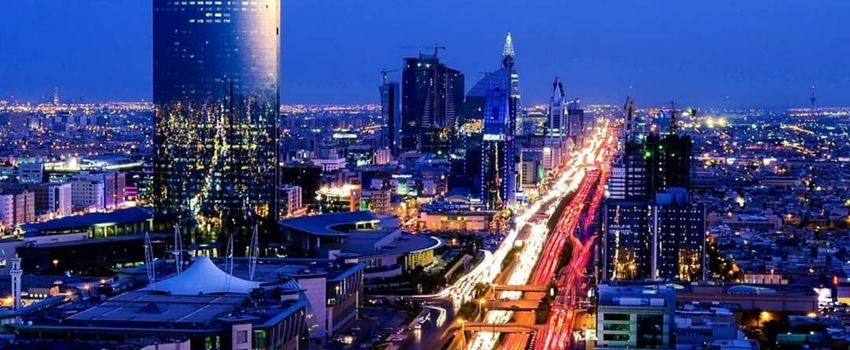
You will spend a total of around 599 AED to apply for the Saudi e-visa. This price includes the consultation fees, collection of documents, typing the application, payment of the visa fees to the Saudi embassy and a travel insurance.
If you are 75 years old and above, and applying for this visa, you will have to pay more money to buy a n insurance cover.
The Saudi e-visa is valid for one year from the first date you enter the kingdom. It is a multiple entry type of visa and allows you to stay a total of 90 days during the one-year period.
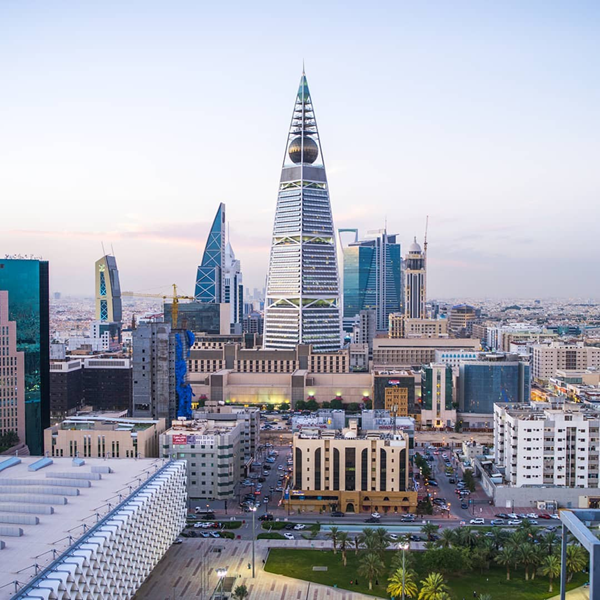
An e-visa to Saudi Arabia can only be applied online and takes 2 to 3 working days to be ready. Just like in the UAE, Saudi Arabia from January 1 2022 changed its working days and now government offices open from Monday to Friday noon.
It is therefore advisable if you apply for the e-visa during the working days to avoid delays in processing. Below is the easy process to follow to apply for a Saudi visa :
If you are travelling to the Kingdom of Saudi Arabia, including those who are travelling from the UAE, you need to have a valid travel insurance so that you can be allowed entry into the country.
| Type of insurance | |
| Benefits and the limit of coverage provided by this policy: the highest benefit threshold for each individual for the length of the policy, which also includes any lesser thresholds laid out in this policy | 100000 SAR |
| The costs of diagnosing and treating urgent cases | Up to the policy limit |
| Hospitalization expenses | |
| Excess percentage (contribution in payment) | No |
| Hospitalization | Up to the policy limit |
| The patient's accommodation and daily allowance, covers bed wages, nursing care, visits, medical supervision, and life-supporting services but excludes the expense of medicines and medical supplies prescribed by the doctor | Shared room and up to a limit of SAR 600 /day |
| Accommodation limit for patient's escort | Shared room and up to a limit of SAR 150/day |
| Treatment of emergency maternity and delivery cases | Up to SAR 5000 for the duration of the Policy |
| Cost of travel and accompanying of one direct family member | Up to SAR 5000 for the duration of the policy |
| Emergency dental treatment | Up to SAR 500 for the duration of the policy |
| The expenses of the birth and treatment of premature babies | Up to the policy limit |
| Treatment to injuries resulting from road traffic accidents | Up to the policy limit |
| The expenses of emergency kidney Dialysis | Up to the policy limit |
| Emergency Medical Evacuation inside and outside the Kingdom | Up to the policy limit |
| Repatriation of mortal remains to the country of origin | Up to SAR 10000 for the duration of the policy |
| COVID-19 Risks Coverage | |
| Cases insurance coverage COVID-19 | Minimum coverage |
| Medical emergencies | 650,000 riyals |
| Costs of medical isolation | 450 riyals per day, with a maximum of 14 days |
| Return the remains of the deceased to his original home | Actual costs |
| Medical evacuation | Actual costs |
If you live in any of the GCC countries and also have a valid GCC resident visa and you want to travel to Saudi Arabia, you must be in one of the occupations that are mentioned below to qualify to apply for the Saudi e-visa.
September 20, 2024
Saudi Arabia loosened all the COVID-19 regulations including the need for a PCR test before entering the country and quarantine when you arrive in the country.
Many people think Saudi Arabia is a barren country because of the huge desert, but when you go there you will be surprised at how much the country has to offer in terms of tourism.
Here are some of the best destinations you can visit in Saudi Arabia :
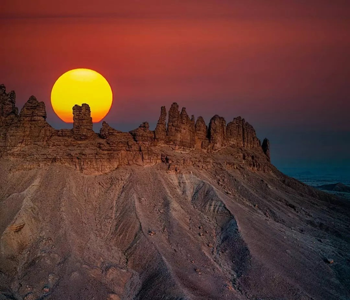
Mada’In Saleh is a city in the Medina Province and it is full with old tombs chiseled into sandstone. The Nabateans, pastoral nomads originating in the Hejaz region of northwest Saudi Arabia carved the tombs here and referred to Mada’In Saleh as a Hegra.
While here, you can also visit the 131 gigantic rocks cut out tombs that act as antique artifacts from the past.
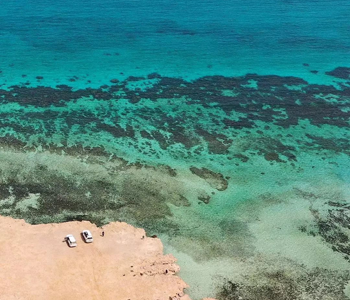
The Saudi Arabia authority opened the door for all visitors from across the world in 2019 and since then the Saudi Arabian shoreline between the Red Sea and the Persian Gulf coast have welcomed many visitors. The brand-new coast attracts many people who want to explore it and those who want to participate in outdoor water activities.
You can rent a boat at the Red Sea Marina, go for snorkeling or scuba diving or even camp at the beach over the weekend. If you want to camp by the beach, you have to ask for permission from the coast guard. Also, you can go for kitesurfing on the beaches in Jeddah.

Many Middle Eastern countries including Saudi Arabia practice the Falconry sport, which typically involves using trained falcons to hunt wild animals.
You can attend the King Abdulaziz Festival of Falconry here which is hosted at the Saudi Falcons Club and in attendance are the owners of falcons from Saudi Arabia and the Gulf Cooperation Council. The festival is an opportunity for you to learn about the unique cultural heritage of the kingdom.
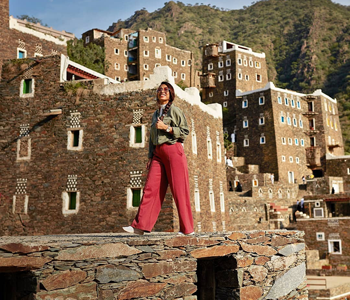
Al Balad, a town located right in the middle of Jeddah’s old city and is a living tribute to the history of Jeddah. Here you will find beautiful mosques and traditional historical buildings. This UNESCO World Heritage site existed since the 7th century and is home to popular historical structures like the Al-Nassif House and the Al-Jamjoom House.

Jabal al Qahar which translates to the ‘Mountain of frustration’, is a barren plateau located in the Asir mountains of Saudi Arabia. The plateau is around 2,000 meters tall and is known for its mysterious nature.
Tour the destination and learn of all the tales surrounding its existence.
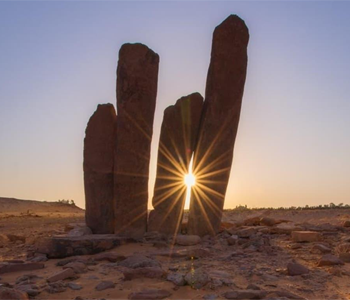
Wadi-e Jinn is a 15-kilometer-long valley that is famous for the optical illusion it creates. When a car is in neutral state at the valley, it appears to be moving uphill. This phenomenon is called the ‘gravity hill’ and is believed to be caused by magnetism and some supernatural forces.
The optical illusion is caused by the landscape’s slight tilt so the road appears to be gradually slopping uphill. You can go for picnic or camp along the road so that you can enjoy the views.
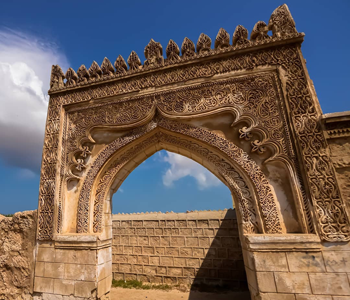
Salma Palace was built back in the 10th century under the instructions of Prince Hammad Al- Jumaili to protect himself and the territory from his neighbor and great enemy Sharif Hassan bin Abi Nami. The palace has very tall walls that helped protect the city from being invaded.
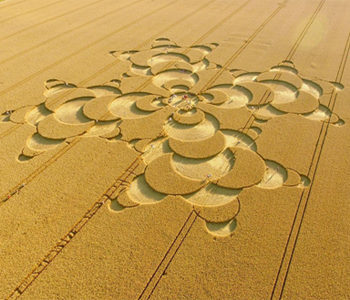
When you look at a clear satellite image of the Wadi al-Dawasir in Saudi Arabia, it reveals a dense collection of green circles on a north-south axis. The circles are built of crops of alfalfa plantations, small wheat farms and vegetables.
Even though the crops are all green, their colors and reflections are different depending on the type of crop, its thickness and health.
The circular fields are a little under a kilometer in diameter and were created through the Centre pivot irrigation. This is where a well that is 100 to 200 meters deep is dug to access water from the underground.
When the water is pumped out it is combined with fertilizer and then spread out to the farms through spinning sprinklers.
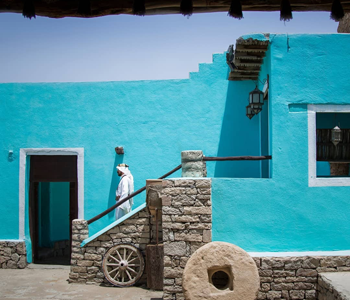
Al Yanfa village is located in the Sahn Tamniah mountain range in the Asir region which is in the southwest Saudi Arabia. Asir, translates to ‘difficult’ and refers to the steep slopes of the mountains that cover the area.
People living in this region decide to create a network of warrens under the buildings so that they can use them to access the furthest buildings. Each building has a direct access to the pathways and they are illuminated by wooden beams.
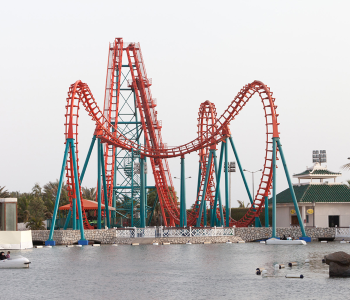
If you are traveling to Saudi Arabia with your friends or family, you can visit the Al Shallal theme park in Jeddah which is a family friendly destination. Here at the park, there are simple rides that even kids can enjoy and a skating rink.
There are also artificial lakes and waterfalls, a shopping mall and variety of restaurants where you can eat from.